| |
Date |
Event(s) |
| 1 | 1787 | - 18 Nov 1787—10 Jul 1851: Louis Daguerre is born
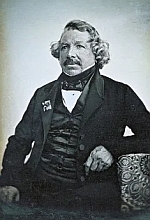
Louis-Jacques-Mandé Daguerre (18 November 1787 – 10 July 1851) was a French artist and photographer, recognized for his invention of the eponymous daguerreotype process of photography. He became known as one of the fathers of photography. Though he is most famous for his contributions to photography, he was also an accomplished painter, scenic designer, and a developer of the diorama theatre.
|
| 2 | 1818 | - 1818—20 Feb 1895: Frederick Douglass is born
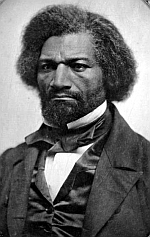
Born into slavery, he successfully escaped 3 Sep 1838. He was a Social reformer, author and orator. Leader in US abolitionist movement. Supported women’s rights movement. Became licensed preacher (1839). Publisher and editor, The North Star (1847-1851), later Frederick Douglass’ Paper (1851-1860). Publisher and editor, the New National Era (1870). Nominated for Vice-President by the Equal Rights Party (1872). Appointed President, Freedmen’s Savings Bank (1874). Served as US Ambassador to Haiti (1889-1891). Works include: Narrative of the Life of Frederick Douglass, an American Slave (1845); My Bondage and My Freedom (1855); and Life and Times of Frederick Douglass (1st ed., 1881, revised, 1892).
|
| 3 | 1829 | |
| 4 | 1835 | - 30 Nov 1835—21 Apr 1918: Mark Twain is born
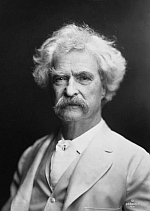
Samuel Langhorne Clemens (November 30, 1835 – April 21, 1910), known by his pen name Mark Twain, was an American writer, humorist, entrepreneur, publisher, and lecturer. He was praised as the "greatest humorist the United States has produced", and William Faulkner called him "the father of American literature". His novels include The Adventures of Tom Sawyer (1876) and its sequel, Adventures of Huckleberry Finn (1884), the latter of which has often been called the "Great American Novel".
|
| 5 | 1845 | - 1845—1855: The Great Famine (or the Irish Potato Famine)
The Great Famine, also known within Ireland as the Great Hunger or simply the Famine and outside Ireland as the Irish Potato Famine, was a period of starvation and disease in Ireland; with the most severely affected areas in the west and south of Ireland. The worst year of the period was 1847. Roughly 1 million people died and more than 1 million fled the country, causing the country's population to fall by 20–25% (in some towns falling as much as 67%) between 1841 and 1871. Between 1845 and 1855, at least 2.1 million people left Ireland, primarily on packet ships but also on steamboats and barques—one of the greatest exoduses from a single island in history.
|
| 6 | 1847 | - 11 Feb 1847—18 Oct 1931: Thomas Edison is born
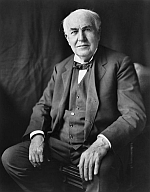
Thomas Alva Edison (February 11, 1847 – October 18, 1931) was an American inventor and businessman. He developed many devices in fields such as electric power generation, mass communication, sound recording, and motion pictures.[4] These inventions, which include the phonograph, the motion picture camera, and early versions of the electric light bulb, have had a widespread impact on the modern industrialized world.
- 3 Mar 1847—2 Aug 1922: Alexander Graham Bell is born
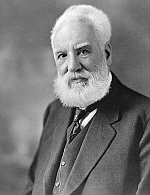
Alexander Graham Bell was a Scottish-born scientist, inventor, engineer, and innovator who is credited with inventing and patenting the first practical telephone. He also founded the American Telephone and Telegraph Company (AT&T) in 1885.
Bell's father, grandfather, and brother had all been associated with work on elocution and speech and both his mother and wife were deaf, profoundly influencing Bell's life's work. His research on hearing and speech further led him to experiment with hearing devices which eventually culminated in Bell being awarded the first U.S. patent for the telephone in 1876. Bell considered his invention an intrusion on his real work as a scientist and refused to have a telephone in his study.
|
| 7 | 1848 | - 1848—1855: California Gold Rush
The California Gold Rush (1848–1855) was a gold rush that began on January 24, 1848, when gold was found by James W. Marshall at Sutter's Mill in Coloma, California. The news of gold brought approximately 300,000 people to California from the rest of the United States and abroad.
|
| 8 | 1852 | - 1852—1860: Cholera pandemic
Generally considered the most deadly of the seven cholera pandemics, the third major outbreak of Cholera in the 19th century lasted from 1852 to 1860. Researchers at UCLA believe may have started as early as 1837 and lasted until 1863. Like the first and second pandemics, the Third Cholera Pandemic originated in India, spreading from the Ganges River Delta before tearing through Asia, Europe, North America and Africa and ending the lives of over a million people.
British physician John Snow, while working in a poor area of London, tracked cases of cholera and eventually succeeded in identifying contaminated water as the means of transmission for the disease.
|
| 9 | 1857 | |
| 10 | 1861 | - 1861: First true bicycle
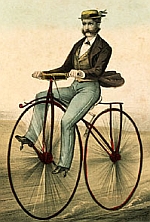
The first true bicycle is invented in France by Ernest Michaux and Pierre Lallement. The Velocipede, often known as the “boneshaker”, was the first bike with pedals (but no brakes!). It was called the “boneshaker” because of its stiff iron frame. This made to a rough and bumpy ride.
- 4 Mar 1861—15 Apr 1865: President Abraham Lincoln
16th President of the United States. Born Feb. 12, 1809. Assassinated Apr 15, 1865 at the age of 56.
- 12 Apr 1861—26 May 1865: American Civil War
The American Civil War was a civil war in the United States. It was fought between the Union ("the North") and the Confederacy ("the South"), the latter formed by states that had seceded. The central cause of the war was the dispute over whether slavery would be permitted to expand into the western territories, leading to more slave states, or be prevented from doing so, which was widely believed would place slavery on a course of ultimate extinction.
|
| 11 | 1865 | |
| 12 | 1867 | - 7 Nov 1867: Marie Curie is born
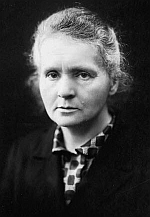
Marie Skłodowska Curie; born Maria Salomea Skłodowska 7 November 1867 – 4 July 1934) was a Polish and naturalized-French physicist and chemist who conducted pioneering research on radioactivity. She was the first woman to win a Nobel Prize, the first person and only woman to win twice, and the only person to win a Nobel Prize in two different sciences. She was part of the Curie family legacy of five Nobel Prizes. She was also the first woman to become a professor at the University of Paris, and in 1995 became the first woman to be entombed on her own merits in the Panthéon in Paris.
She was born in Warsaw, in what was then the Kingdom of Poland, part of the Russian Empire. She studied at Warsaw's clandestine Flying University and began her practical scientific training in Warsaw. In 1891, aged 24, she followed her older sister Bronisława to study in Paris, where she earned her higher degrees and conducted her subsequent scientific work. She shared the 1903 Nobel Prize in Physics with her husband Pierre Curie and physicist Henri Becquerel. She won the 1911 Nobel Prize in Chemistry.
|
| 13 | 1869 | - 1869: Transcontinental Railroad Completed
By connecting the existing eastern U.S. rail networks to the west coast, the Transcontinental Railroad (known originally as the "Pacific Railroad") became the first continuous railroad line across the United States. It was constructed between 1863 and 1869.
- 4 Mar 1869—5 Mar 1877: President Ulysses S. Grant
18th President of the United States. Born Apr. 27, 1822. Died Jul. 23, 1885 at the age of 63.
|
| 14 | 1879 | - 14 Mar 1879: Albert Einstein is born
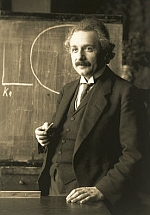
Albert Einstein was a German-born theoretical physicist, widely acknowledged to be one of the greatest and most influential physicists of all time. Einstein is best known for developing the Theory of Relativity, but he also made important contributions to the development of the theory of quantum mechanics. Relativity and quantum mechanics are the two pillars of modern physics.
|
| 15 | 1882 | - 1882: The first incandescent light bulb.

In 1880 Edison invented the first incandescent light bulb that was practical, one that would stay lit for for hours and hours. Two years later in 1882, Thomas Edison helped form the company that brought electric light to parts of Manhattan. But progress was slow. Most Americans still lit their homes with gas light and candles for another 50 years. Only in 1925 did half of all homes in the US have electric power. By the 1930s, nearly 90 percent of urban households had electricity but only 10 percent of rural households had access.
|
| 16 | 1885 | |
| 17 | 1892 | - 1 Jan 1892: Ellis Island Opens
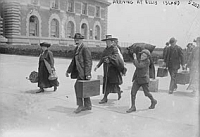
Ellis Island, in Upper New York Bay, was the gateway for over 12 million immigrants to the U.S. as the United States' busiest immigrant inspection station for over 60 years from 1892 until 1954. Ellis Island was opened January 1, 1892. The island was greatly expanded with land reclamation between 1892 and 1934. Before that, the much smaller original island was the site of Fort Gibson and later a naval magazine.
The island was made part of the Statue of Liberty National Monument in 1965 and has hosted a museum of immigration since 1990. "As a visitor to this place, you stand in awe. It has the aura of an ancient cathedral, redolent with the millions who passed through these doors."
|
| 18 | 1898 | - 21 Apr 1898—13 Aug 1898: Spanish-American War
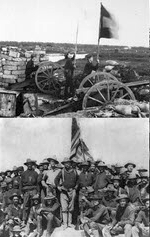
The Spanish–American War was fought between the United States and Spain in 1898. Hostilities began in the aftermath of the internal explosion of USS Maine in Havana Harbor in Cuba, leading to U.S. intervention in the Cuban War of Independence. U.S. acquisition of Spain's Pacific possessions led to its involvement in the Philippine Revolution and ultimately in the Philippine–American War.
The result was the 1898 Treaty of Paris, negotiated on terms favorable to the U.S. which allowed it temporary control of Cuba and ceded ownership of Puerto Rico, Guam, and the Philippine islands. The cession of the Philippines involved payment of $20 million ($602,320,000 today) to Spain by the U.S. to cover infrastructure owned by Spain.
|
| 19 | 1901 | - 1901: The Victor Talking Machine Company
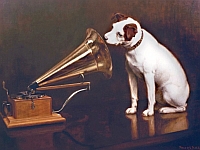
Emile Berliner, the inventor of the flat phonograph disc, sold his business to Eldridge Johnson in 1901 who created the Victor Talking Machine Company. It was in operation until 1929 when it was acquired by RCA.
The phonograph was invented in 1877 by Thomas Edison. Alexander Graham Bell's Volta Laboratory made several improvements in the 1880s and introduced the graphophone, including the use of wax-coated cardboard cylinders instead of Edison's foil cylinders
- 14 Sep 1901—4 Mar 1909: President Theodore Roosevelt
26th President of the United States. Born Oct. 27, 1858. Died Jan. 6, 1919 at the age of 61.
|
| 20 | 1903 | - 1903: First Sustained Flight
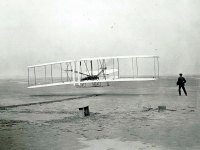
The Wright Flyer (also known as the Kitty Hawk Flyer I or the 1903 Flyer) made the first sustained flight by a manned heavier-than-air powered and controlled aircraft—an airplane—on December 17, 1903. Invented and flown by Orville and Wilbur Wright, it marked the beginning of the pioneer era of aviation.
The Wright brothers flew it four times in a location now part of the town of Kill Devil Hills, about 4 miles (6 kilometers) south of Kitty Hawk, North Carolina. The airplane flew 852 ft (260 m) on its fourth and final flight, but was damaged on landing, and minutes later powerful gusts blew it over, wrecking it.
|
| 21 | 1908 | - 1 Oct 1908: The Ford Model T

The Ford Model T is an automobile that was produced by the Ford Motor Company from October 1, 1908, to May 26, 1927. It is generally regarded as the first affordable automobile, which made car travel available to middle-class Americans. The relatively low price was partly the result of Ford's efficient fabrication, including assembly line production instead of individual handcrafting. It was mainly designed by an American (Childe Harold Wills) and two Hungarian engineers (Joseph A. Galamb, Eugene Farkas). The Model T was colloquially known as the "Tin Lizzie", "Leaping Lena" or "flivver".
|
| 22 | 1910 | - 1910: Phones in households
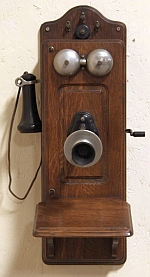
By about 1880, almost 49,000 telephones were in use. By 1900 there were nearly 600,000 phones in Bell’s telephone system; that number shot up to 2.2 million phones by 1905, and 5.8 million by 1910, mainly in large cities. The US population was over 92 million in 1910 so still a small percentage of households had phones. It wasn't until after World War II that rural homes had phone service.
|
| 23 | 1912 | - 15 Apr 1912: The Titanic Sinks

RMS Titanic sank in the early morning of 15 Apr 1912, 4 days into its maiden voyage from Southampton to New York. The largest liner in service at the time, her sinking killed over 1,500 people, one of the deadliest peacetime maritime disasters in history. The disaster caused widespread outrage over the lack of lifeboats, lax regulations, and unequal treatment of the 3 passenger classes during evacuation.
|
| 24 | 1913 | |
| 25 | 1914 | - 1914—1918: World War I

World War I, also known as the First World War or the Great War, was a global war originating in Europe. Contemporaneously described as "the war to end all wars", it led to the mobilization of more than 70 million military personnel, including 60 million Europeans, making it one of the largest wars in history. It was also one of the deadliest conflicts in history; an estimated nine million combatants and seven million civilians died as a direct result of the war, while resulting genocides and the 1918 influenza pandemic caused another 50 to 100 million deaths worldwide.
- 1 Jan 1914: World's first scheduled passenger airline service
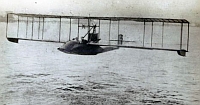
On Jan. 1, 1914, the world's first scheduled passenger airline service took off from St. Petersburg, FL and landed at its destination in Tampa, FL, about 17 miles (27 kilometers) away, with a fly time of 23 minutes. The first flight's pilot was Tony Jannus, an experienced test pilot and barnstormer. The first paying passenger was Abram C. Pheil, former mayor of St. Petersburg.
At that time, a trip between the two cities, sitting on opposite sides of Tampa Bay, took two hours by steamship or up to 12 hours by rail. Traveling by automobile around the bay took about 20 hours. But a flight would take about 20 minutes.
|
| 26 | 1915 | - 25 Jan 1915: First transcontinental telephone call
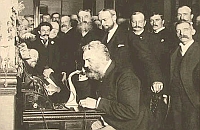
The original long-distance telephone network was started in 1885 in New York City. By 1892 this line reached Chicago. After introducing loading coils in 1899, the long-distance line continued west, and by 1911 it reached Denver, Colorado. On June 17, 1914, after affixing 4,750 miles (7,640 km) of telephone line, workers raised the final pole at Wendover, Utah. Then, Theodore Vail, the president of AT&T, succeeded in transmitting his voice across the continental U.S. in July 1914.
Six months later, Alexander Graham Bell in New York City, repeated his famous statement "Mr. Watson, come here. I want you," into the telephone, which was heard by his assistant Thomas Augustus Watson in San Francisco, for a long-distance call of 3,400 miles (5,500 km). Watson replied, "It will take me five days to get there now!" The Alexander Graham Bell call officially initiated AT&T's transcontinental service.
|
| 27 | 1918 | - 4 Mar 1918—1920: Spanish Flu Pandemic
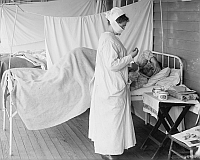
The 1918 flu pandemic, also known as the Great Influenza epidemic or by the common misnomer of the Spanish flu, was an exceptionally deadly global influenza pandemic. The earliest documented case was March 1918 in Kansas, United States, with further cases recorded in France, Germany and the United Kingdom in April. Two years later, nearly a third of the global population, or an estimated 500 million people, had been infected in four successive waves. Estimates of deaths range from 17 million to 50 million and possibly as high as 100 million, making it one of the deadliest pandemics in history.
|
| 28 | 1920 | - 18 Aug 1920: Women's Right to Vote
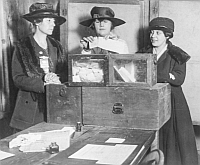
Passed by Congress June 4, 1919, and ratified on August 18, 1920, the 19th amendment granted women the right to vote. The 19th amendment legally guarantees American women the right to vote. Achieving this milestone required a lengthy and difficult struggle—victory took decades of agitation and protest.
|
